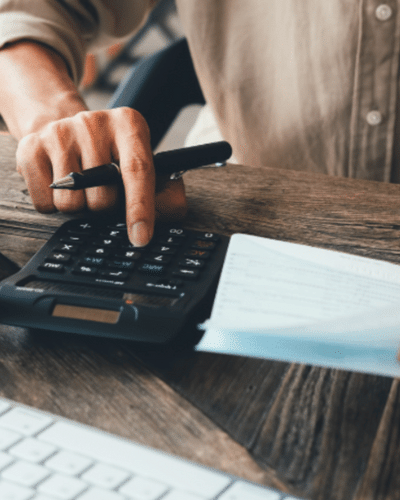Moving house is an exciting but often challenging experience that requires careful planning and organisation. One crucial aspect often overlooked is managing energy during the moving process. Ensuring a smooth transition of your energy services can help you avoid unnecessary stress and financial complications. This comprehensive guide delves into the key considerations and steps to set up electricity in your new home.
Energy Matters has been a leader in the renewable energy industry since 2005 and has helped over 40,000 Australian households in their journey to energy independence.
Let us discuss and choose the best quote that suits your needs and budget, and we can connect you with our trusted local installers, who will provide up to 3 FREE quotes for your home and business solar energy system.
What to do before you move
- Understanding the importance of managing electricity when moving. Moving house involves more than just packing and unpacking boxes. It’s essential to manage your energy services properly to avoid disruptions in supply, prevent double billing, and ensure a seamless transition to your new residence. Neglecting this aspect can lead to unnecessary costs and hassles during an already hectic time.
- Meter readings and final bills. Taking meter readings at your old and new addresses is crucial for accurate billing. Before moving out, document the readings to ensure you’re not charged for energy usage after you vacate the property. Similarly, provide the meter readings to your new energy provider to start your billing accurately. This step helps prevent disputes and ensures that you’re only paying for the energy you consume.
- Check if electricity is connected to your new property. If you’re moving into a rental property, the landlord should have arranged for electricity to be connected. However, it’s always a good idea to double-check. You can do this by contacting your local electricity distributor.
- Consider smart meters and energy efficiency. If your new home doesn’t have a smart meter, it might be worth installing one. Smart meters provide real-time data about your energy usage, helping you make informed decisions to manage your consumption and save on costs. Additionally, take this opportunity to implement energy-efficient practices in your new home, such as using energy-efficient appliances and insulation, which can significantly impact your energy bills over time.
- Compare electricity plans. Once you know that electricity is connected to your new property, it’s time to start comparing plans. There are a number of different factors to consider when choosing an electricity plan, such as the price, the features, and the green energy options. You can use Energy Matters’ compare and save tool to compare plans from different electricity providers.
- Choose a plan and sign up. Once you’ve found a plan you’re happy with, you can sign up online or over the phone. Be sure to provide your new address and desired connection date.
- Provide your new meter details to your electricity retailer. Your electricity retailer will need your new meter details to start billing you for your electricity usage. You can find your meter details on your electricity bill or by contacting your electricity distributor.
- Be aware of disconnection fees. While transferring energy services, be mindful of any potential disconnection and reconnection fees associated with your energy provider. Understanding these costs can help you budget effectively and avoid any unexpected charges.
Switching to a better energy plan? You may already have an energy plan but want more power or to shop for a better deal.
Energy Matters‘ Free Energy Bill Comparator” is a cutting-edge energy bill tool that compares your area’s most competitive retail offers. We collect the data from our wide range of trusted retailers, allowing you to decide on the switching plan and find the best deal for your needs.
If your goal is to get more electricity and minimise the cost of your gas and electricity bills, switch to a better plan now!
What to do on moving day
- Contact your old electricity provider. If you’re not moving into a rental property, you must contact your old electricity provider to cancel your service. You can do this online or over the phone.
- Contact your new electricity provider. Once you’ve moved into your new property, be sure to contact your new electricity provider to activate your service. They will need your new address and account details.
- If you’re moving into a share house, you’ll need to decide how you want to manage the electricity bill. You could split the bill equally, or each person could pay for their own usage.
- If you’re moving into a rental property, you’ll need permission from the landlord before switching to electricity retailers.
- If you’re moving into a new building, you may need to pay a deposit for the connection fee.

Is the process for connecting electricity different for renters?
The process for connecting electricity is broadly the same for renters as for homeowners in Australia. However, there are a few key differences.
- The renter is responsible for contacting the electricity provider and arranging the connection. The landlord may be able to provide the renter with the contact information for the current electricity provider, or the renter can search for a provider online.
- The renter may need to get the landlord’s permission to connect electricity. This is especially true if the property does not currently have electricity connected. The landlord may also have a preferred electricity provider they want the renter to use.
- The renter may be required to pay a connection fee. The amount of the connection fee varies depending on the electricity provider and the property’s location.
Once the connection has been arranged, the electricity provider will send a technician to the property to connect the electricity. The renter should be present for this appointment to provide the technician access to the property.
In some cases, the landlord may be responsible for connecting electricity to the rental property. This is usually the case if the property is newly built or if the landlord has recently purchased the property. However, the renter should always check with the landlord to determine who connects the electricity.
What if the property has solar panels?
If you are setting up electricity in a property that already has solar panels, there are a few things you need to keep in mind. First, you must inspect the solar panels to ensure they are in good working order. You must also get a solar certificate of compliance (SCC) from a qualified electrician. Once the solar panels have been inspected and you have an SCC, you can connect them to the electricity grid.
You must work with your electricity retailer when connecting solar panels to the grid. They will be able to help you set up a feed-in tariff (FiT), which is a payment you receive for the solar energy you export to the grid. The FiT rate will vary depending on your location and retailer.
If you plan to install solar panels on your property, it is important to research and get quotes from several different installers. You should also ensure that the solar panels you choose are compatible with your electricity retailer’s FiT scheme.
Here are some additional things to keep in mind when setting up electricity in a property with solar panels:
- The size of the solar system will affect how much electricity you can generate and export to the grid.
- The orientation and tilt of the solar panels will also affect their efficiency.
- You may need to install a battery to store excess solar energy for use at night or during cloudy days.
Overall, setting up electricity in a property with solar panels is a relatively straightforward process. By following the steps outlined above, you can ensure that your solar system is installed correctly and you receive the maximum benefit.
Tips for saving money on electricity

- Switch to a green energy plan. Green energy plans are more expensive than traditional plans, but they can help you reduce your carbon footprint.
- Install energy-efficient appliances. Energy-efficient appliances use less power, saving you money on your electricity bill.
- Unplug appliances when you’re not using them. Even when they’re turned off, appliances can still draw power. Unplugging them when you’re not using them can save you money.
- Set your thermostat to a lower temperature in winter and a higher temperature in summer. This can help you save money on your heating and cooling costs.
Following these simple steps, you can easily set up electricity when moving house in Australia and save money on your energy bills.
Here are some additional tips to help you get the most out of your electricity plan:
- Read the fine print. Before you sign up for an electricity plan, be sure to read the fine print carefully. This will help you understand the terms and conditions of the plan, such as the early termination fees.
- Ask about discounts. Many electricity providers offer discounts for paying your bill on time or signing up for a direct debit. Be sure to ask about any discounts that may be available to you.
- Consider a variable plan. Variable plans allow your electricity rate to fluctuate with the market price of electricity. This can be a good option if you’re willing to take on some risk in exchange for the potential to save money.
By following these tips, you can find the best electricity plan for your needs and save money on your energy bills.
Still can’t afford to switch to solar power?
Are you considering getting solar panels but are currently short on funds? You can still invest wisely, and Energy Matters can help you.
Powow and Energy Matters have teamed up to provide consumers with an alternative to switching to solar power and battery storage.
The biggest obstacle to installing solar and battery storage is typically finance. With Powow’s PPA and VPP, our customers will have a $0 upfront option and financial stability in the uncertain energy market.
Get up to 3 obligation-free quotes by getting in touch with us right away. Find out what payment plan options suit your needs and budget!







































